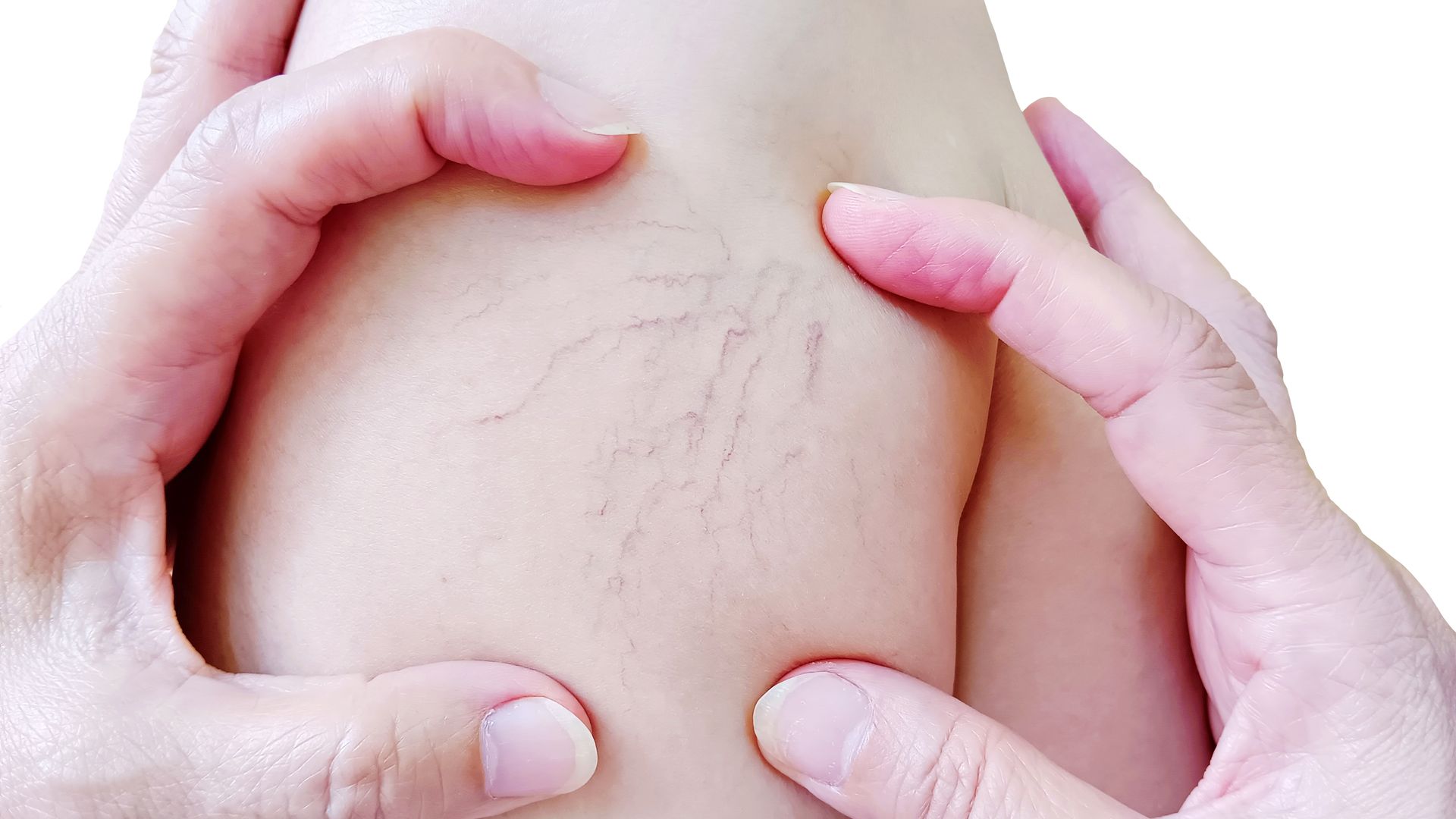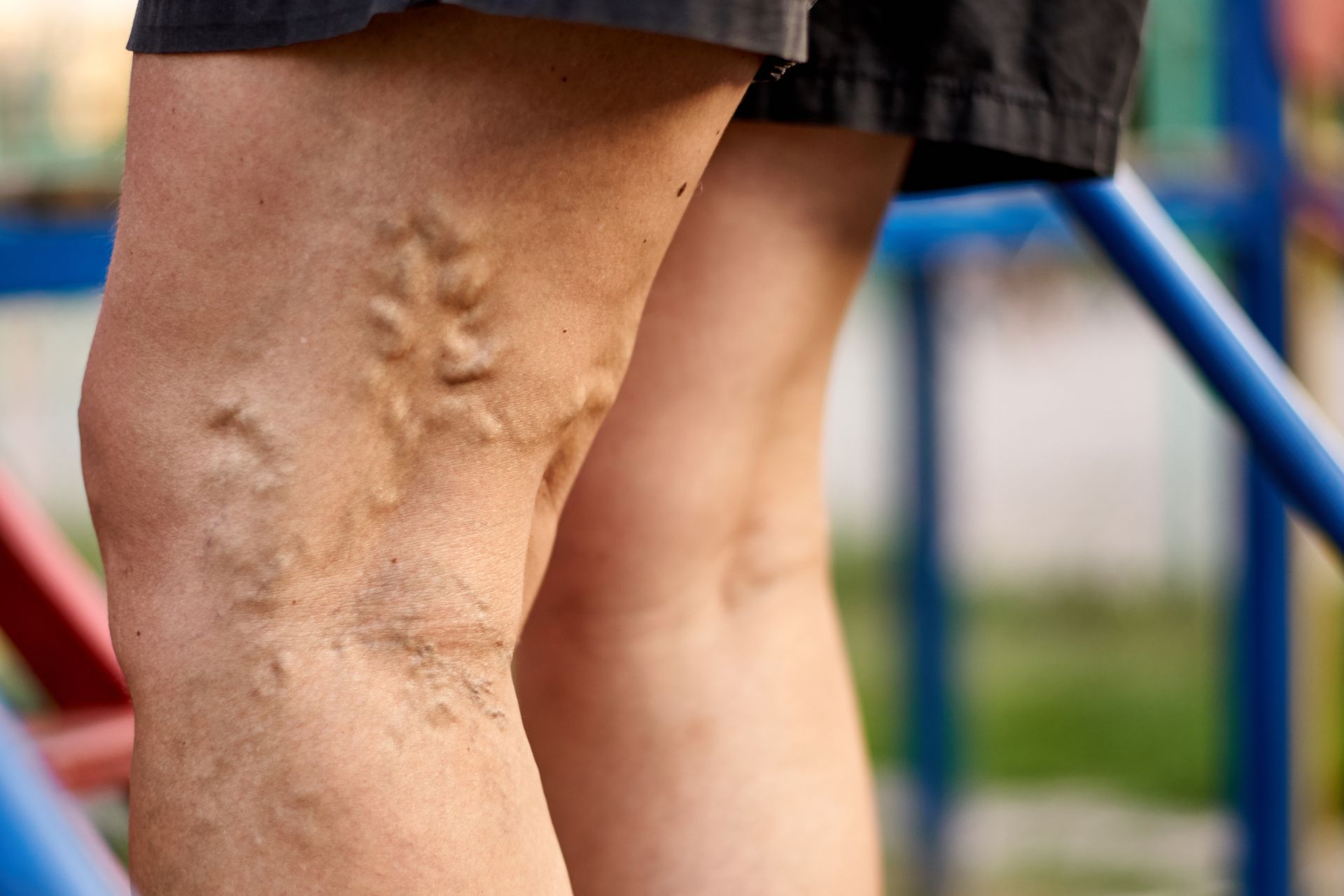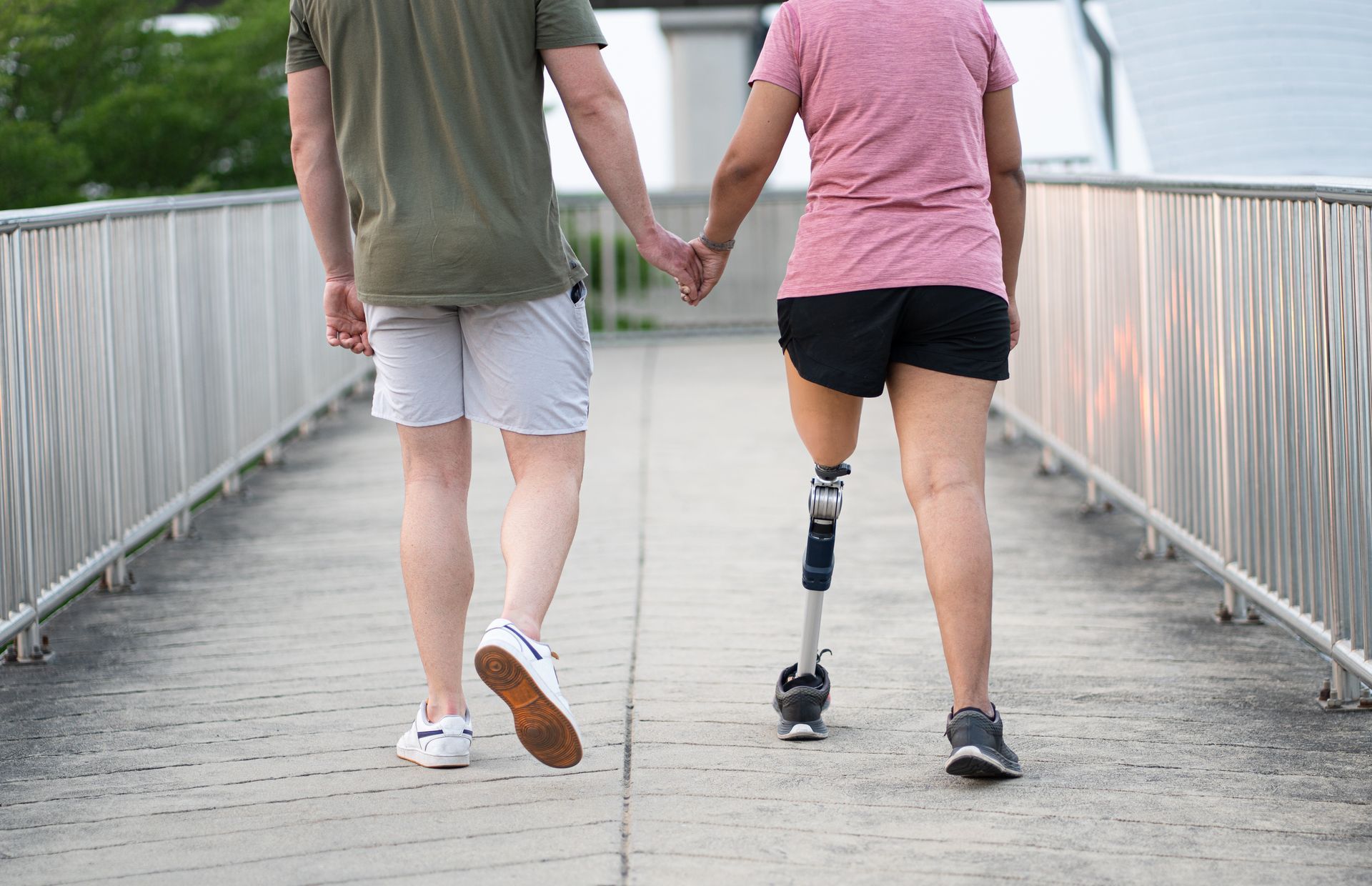Vascular Health and Travel: Tips for Long Trips and Avoiding Blood Clots
Key Points
- Flights of 4+ hours significantly increase DVT risk, with 8-10 hour flights posing the greatest danger
- More than 300 million people travel on long-distance flights annually, making awareness crucial
- Simple prevention strategies can reduce blood clot risk by up to 90% during travel
- Dehydration, immobility, and cabin pressure changes create the perfect storm for clot formation
- Symptoms may not appear until days or weeks after travel - know what to watch for
- High-risk travelers should consult a vascular specialist before long trips
Summer travel season is upon us, and millions of people are planning long-awaited vacations, family visits, and business trips. Whether you're flying to Europe, driving across the country, or taking that dream cruise, extended travel brings excitement—and some hidden health risks you should know about.
At Ascent Vascular Specialists and Vein Center in the Vail Valley, we see firsthand how travel-related blood clots can turn a perfect vacation into a medical emergency. The good news? With the right knowledge and preparation, you can explore the world safely while protecting your vascular health.
Understanding Travel-Related Blood Clots
What Makes Travel Dangerous for Your Blood Vessels?
When you're traveling, especially on flights lasting 4+ hours, three critical factors combine to increase your risk of developing deep vein thrombosis (DVT):
1. Prolonged Immobility Sitting still for extended periods slows blood flow in your legs. Your veins really need mobility to circulate blood from your feet back up to your heart. When you're confined to a cramped airplane seat, bus, or car for hours, blood can pool in your lower extremities.
2. Dehydration It's easy to forget to drink water while rushing to make your flight, and travelers who drink alcohol or caffeine may become even more dehydrated. Then people take sleep medications and are out for the duration of the flight, creating multiple preventable risk factors.
3. Cabin Pressure Changes When you're in an airplane, you're sitting in an area with reduced air pressure. This causes you to take in less oxygen when you breathe (hypoxia). While this oxygen loss is mild in most cases, it can slow blood flow, increasing the risk of a blood clot forming.
The Numbers That Matter
More than 300 million people travel on long-distance flights (generally more than four hours) each year. While the absolute risk of developing DVT after a long flight is relatively small, the consequences can be life-threatening:
- The risk of developing a blood clot during or shortly after flight is about 1 in 4,600 for flights over 4 hours
- Flights lasting 8 to 10 hours or longer pose the greatest risk
- Your blood clot risk stays higher than normal for several weeks after long travel
Who's at Highest Risk?
High-Risk Factors for Travel-Related DVT
While anyone can develop travel-related blood clots, certain factors significantly increase your risk:
Medical History:
- Previous blood clots or family history of clotting disorders
- Recent surgery (within the past 90 days)
- Active cancer or cancer treatment
- Heart disease or congestive heart failure
- Stroke
Medications and Hormones:
- Estrogen-containing contraceptives or hormone replacement therapy
- Blood clotting disorders
- Recent hospitalization
Physical Factors:
- Obesity (significant risk factor for travel-related DVT)
- Pregnancy or recent childbirth
- Age over 60
- Height over 6 feet or under 5 feet
Lifestyle Factors:
- Smoking
- Varicose veins
- Limited mobility or recent bed rest
When to Consult a Vascular Specialist
If you have any of the high-risk factors mentioned above, you should be assessed by a vascular specialist before taking trips longer than 4 hours. Dr. Scott Ziporin, our board-certified vascular surgeon at Ascent Vascular Specialists, recommends that high-risk patients discuss their travel plans in advance.
For those with a history of DVT or at extremely high risk, some cases may require a course of low-dose anticoagulation medication for travel. This decision should always be made in consultation with a qualified vascular specialist.
Essential Prevention Strategies for Safe Travel
Before You Travel
Plan Your Route Wisely
- Choose aisle seats when possible, as this encourages moving around during the journey
- Consider breaking up extremely long flights with layovers
- If driving, plan stops every hour for movement breaks
Prepare Your Body
- Stay well-hydrated in the days leading up to travel
- Avoid excessive alcohol consumption before and during travel
- Get adequate sleep before your trip
- Consider wearing compression stockings (more on this below)
During Travel
Movement is Medicine
- Stand up or walk around at least once every hour during flights
- Perform calf raises and ankle circles while seated
- Do simple stretches in your seat
- Avoid placing cabin baggage where it restricts leg movement
Stay Hydrated
- Drink water regularly throughout your journey
- Limit alcohol and caffeine consumption
- Avoid sleep medications that prevent you from moving naturally
Optimize Your Seating
- Choose seats with extra legroom when possible
- Avoid crossing your legs for extended periods
- Keep feet flat on the floor or footrest
- Change positions frequently
Compression Stockings: Your Travel Companion
Graduated compression stockings (also called anti-embolism stockings) can significantly reduce your DVT risk during travel. Here's what you need to know:
How They Work:
- Apply gentle pressure that's strongest at the ankle and gradually decreases up the leg
- Help prevent blood from pooling in lower extremities
- Improve circulation and reduce swelling
Choosing the Right Stockings:
- Ensure you buy the correct type and size
- Knee-high stockings are usually sufficient for travel
- Must be properly fitted - incorrectly fitting stockings can actually increase DVT risk
- Consider professional fitting if you have varicose veins or need higher compression
Recognizing the Warning Signs
DVT Symptoms to Watch For
About half of people with DVT have no symptoms at all, making awareness crucial. However, when symptoms do occur, they typically include:
In the Affected Leg (Usually One-Sided):
- Swelling, warmth, or tenderness
- Pain that gets worse when you stand or walk
- Red or discolored skin
- Skin that feels warm to the touch
- Swelling that may appear as a ridge along a blood vessel
Pulmonary Embolism: A Medical Emergency
If a blood clot breaks off and travels to your lungs, it causes a pulmonary embolism (PE) - a life-threatening emergency. Symptoms include:
- Sudden shortness of breath
- Sharp chest pain that may worsen with deep breathing or coughing
- Rapid or irregular heartbeat
- Coughing up blood
- Dizziness or fainting
- Excessive sweating or anxiety
Important: If you experience any PE symptoms, seek emergency medical care immediately. Time is critical in treating pulmonary embolism.
When to Seek Medical Attention
Seek Immediate Emergency Care If:
- You have symptoms of pulmonary embolism
- You develop severe leg pain or swelling
- You have shortness of breath that doesn't improve
Contact Your Doctor Soon If:
- You notice any DVT symptoms in your legs after travel
- You have persistent leg discomfort or swelling
- Anything feels "off" within a week or two after a long trip
Remember: Even young, healthy people can develop travel-related blood clots, and it's a very easy diagnosis to make with an ultrasound available almost anywhere.
Travel Tips by Transportation Type
Air Travel
For Flights Under 4 Hours:
- Basic movement and hydration are usually sufficient
- Consider compression stockings if you have risk factors
For Flights 4-8 Hours:
- Mandatory hourly movement
- Compression stockings recommended
- Extra attention to hydration
For Flights Over 8 Hours:
- All prevention strategies essential
- Consider pre-travel medical consultation if you have risk factors
- Pack compression stockings and movement reminders
Road Trips
Every Hour:
- Stop and walk around for at least 5-10 minutes
- Perform calf raises and stretches
- Switch drivers if possible
While Driving:
- Flex ankles and calf muscles regularly
- Adjust seat position periodically
- Stay hydrated but balance with bathroom breaks
Train and Bus Travel
Similar Risks:
- Long periods of immobility create the same risks as flying
- Apply the same prevention strategies
- Take advantage of any stops to move around
Special Considerations for Vail Valley Travelers
Altitude and Blood Clot Risk
Living in or traveling to high-altitude locations like the Vail Valley adds another consideration. Higher altitudes can:
- Increase dehydration risk
- Affect blood oxygen levels
- Potentially influence clotting factors
If you're traveling from sea level to high altitude or vice versa, extra attention to hydration and gradual acclimatization is important.
Adventure Travel Preparation
Many of our patients at Ascent Vascular are adventure enthusiasts planning active vacations. If you're combining long travel with activities like skiing, hiking, or climbing:
- Allow recovery time after long flights before strenuous activities
- Maintain extra vigilance for DVT symptoms
- Consider pre-trip vascular health screening
Post-Travel Monitoring
The Critical Two-Week Window
Your risk of blood clots remains elevated for several weeks after long travel. During this time:
- Monitor for any unusual leg symptoms
- Stay active to promote healthy circulation
- Maintain good hydration
- Be alert to warning signs
When "Normal" Isn't Normal
Don't dismiss post-travel symptoms as just fatigue or soreness. Trust your instincts - if something feels off after travel, especially unilateral leg symptoms, seek medical evaluation rather than assuming it's a pulled muscle.
Advanced Prevention for High-Risk Travelers
Medical Interventions
For travelers at extremely high risk, medical interventions might include:
- Prescription anticoagulation therapy for travel
- Professional vascular evaluation before extended trips
- Customized prevention protocols
Specialized Compression Therapy
Some high-risk patients may benefit from:
- Prescription-strength compression stockings
- Professional fitting and education
- Medical-grade compression devices
FAQs About Travel and Blood Clots
Should I take aspirin to prevent blood clots when traveling?
Taking aspirin to prevent blood clots when traveling is not recommended by medical professionals. While aspirin has blood-thinning properties, it's not effective for preventing the type of clots that form during travel. If you take aspirin for other medical reasons, check with your doctor, but don't start taking it solely for travel protection.
How soon after a previous blood clot can I safely travel?
If you have a history of blood clots or have recently been treated for them, your risk of developing DVT or PE while flying is significantly higher. Some medical professionals recommend waiting at least four weeks after treatment with blood-thinning medications is complete before taking flights longer than 4-6 hours. Always consult your vascular specialist before traveling.
Do varicose veins increase my risk of travel-related blood clots?
Varicose veins alone do not necessarily put you at higher risk for DVT during flights. However, they may indicate underlying venous insufficiency. If you have varicose veins and are planning long travel, it's worth discussing with a vascular specialist, especially since compression stockings may carry slightly different risks for people with varicose veins.
Can I develop blood clots on shorter flights or car trips?
While the risk increases significantly with travel lasting 4+ hours, any prolonged immobility can potentially contribute to blood clot formation. Even for shorter trips, it's beneficial to move regularly and stay hydrated, especially if you have other risk factors.
What's the difference between economy class syndrome and DVT?
"Economy class syndrome" is a popular term for travel-related DVT, but it's misleading because blood clots can occur in any class of travel and in any form of transportation where you're immobile for extended periods. The risk is related to immobility, not specifically to cramped seating, though limited legroom can contribute to the problem.
Are compression stockings uncomfortable to wear during travel?
Properly fitted compression stockings should be comfortable. If they're painful, too tight, or causing skin irritation, they may be the wrong size or compression level. Many travelers find them actually make their legs feel better during and after long trips.
FAQs About Ascent Vascular Specialists
What makes Dr. Ziporin qualified to treat travel-related blood clots?
Dr. Scott Ziporin is a board-certified vascular surgeon with fellowship training from Harvard University/Beth Israel-Deaconess Medical Center. He's trained in all areas of vascular surgery, including the treatment of deep vein thrombosis and pulmonary embolism. Dr. Ziporin is the only fellowship-trained vascular surgeon living permanently and practicing in the Vail Valley, giving him unique expertise in treating both local residents and visitors.
Do you treat emergency blood clot cases?
Yes, DVT and pulmonary embolism are vascular emergencies that Dr. Ziporin is fully qualified to diagnose and treat. Our clinic works closely with local emergency services and hospitals to provide comprehensive care for acute vascular conditions.
Should I schedule a consultation before a long trip?
If you have risk factors for blood clots, including previous DVT, family history, recent surgery, cancer, or other medical conditions, we recommend scheduling a pre-travel consultation. Dr. Ziporin can assess your individual risk and recommend appropriate prevention strategies, including whether you might benefit from compression stockings or anticoagulation therapy.
What vascular conditions do you treat at Ascent Vascular Specialist?
We provide expert treatment for a comprehensive range of vascular conditions, including varicose veins, peripheral arterial disease, deep vein thrombosis, spider veins, and other vascular conditions. Our treatments include VenaSeal vein closure, radiofrequency vein ablation, sclerotherapy, and other advanced techniques.
How do I know if my leg symptoms after travel need immediate attention?
Contact us immediately if you experience sudden onset of leg swelling, pain, warmth, or redness, especially if it's only in one leg. These could be signs of DVT. If you have chest pain, shortness of breath, or other pulmonary embolism symptoms, seek emergency care immediately.
Can you help me develop a personalized travel plan if I'm high-risk?
Absolutely. Dr. Ziporin works with patients to develop individualized prevention strategies based on their specific risk factors, travel plans, and medical history. This might include compression stocking recommendations, medication adjustments, or other preventive measures.
Travel Smart, Travel Safe
Don't let fear of blood clots keep you from exploring the world, but don't ignore the real risks either. With proper preparation, awareness, and preventive strategies, you can significantly reduce your risk of travel-related vascular complications.
At Ascent Vascular Specialists and Vein Center, we're committed to helping our Vail Valley community—residents and visitors alike—maintain optimal vascular health. Dr. Ziporin combines advanced medical expertise with practical, personalized care to ensure you can pursue your adventures safely.
Whether you're planning a once-in-a-lifetime international trip or frequently travel for business, taking a proactive approach to your vascular health is one of the best investments you can make. Remember, the key to safe travel isn't avoiding it—it's being prepared.
Against the stunning backdrop of the Colorado Rockies, we provide an elevated approach to vascular care that prioritizes your well-being and active lifestyle. Because when your vascular health is optimized, there's no limit to where life can take you.
Planning a long trip or concerned about your vascular health? Schedule a consultation with Dr. Ziporin at Ascent Vascular Specialists and Vein Center. Call (970) 926-1003 or visit
ascentvascular.com to book your appointment today. Your journey to better vascular health starts here in the heart of the Vail Valley.











